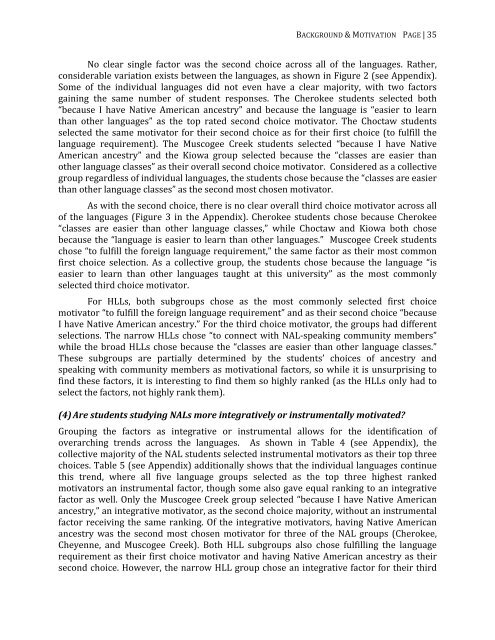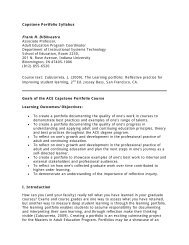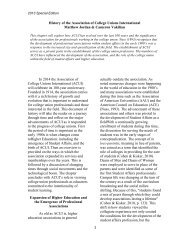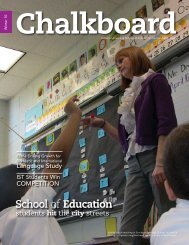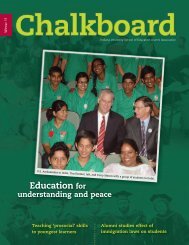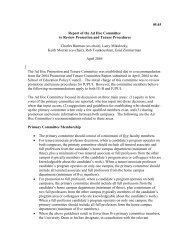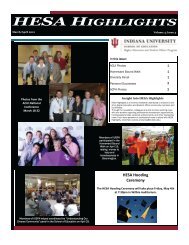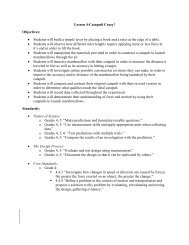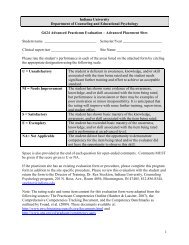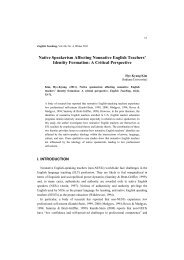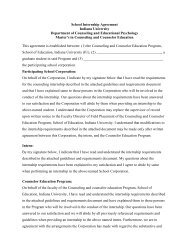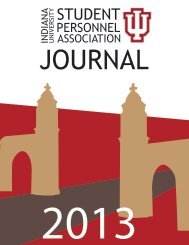Working Papers in Literacy, Culture, and Language Education
Working Papers in Literacy, Culture, and Language Education
Working Papers in Literacy, Culture, and Language Education
Create successful ePaper yourself
Turn your PDF publications into a flip-book with our unique Google optimized e-Paper software.
BACKGROUND & MOTIVATION PAGE | 35No clear s<strong>in</strong>gle factor was the second choice across all of the languages. Rather,considerable variation exists between the languages, as shown <strong>in</strong> Figure 2 (see Appendix).Some of the <strong>in</strong>dividual languages did not even have a clear majority, with two factorsga<strong>in</strong><strong>in</strong>g the same number of student responses. The Cherokee students selected both“because I have Native American ancestry” <strong>and</strong> because the language is “easier to learnthan other languages” as the top rated second choice motivator. The Choctaw studentsselected the same motivator for their second choice as for their first choice (to fulfill thelanguage requirement). The Muscogee Creek students selected “because I have NativeAmerican ancestry” <strong>and</strong> the Kiowa group selected because the “classes are easier thanother language classes” as their overall second choice motivator. Considered as a collectivegroup regardless of <strong>in</strong>dividual languages, the students chose because the “classes are easierthan other language classes” as the second most chosen motivator.As with the second choice, there is no clear overall third choice motivator across allof the languages (Figure 3 <strong>in</strong> the Appendix). Cherokee students chose because Cherokee“classes are easier than other language classes,” while Choctaw <strong>and</strong> Kiowa both chosebecause the “language is easier to learn than other languages.” Muscogee Creek studentschose “to fulfill the foreign language requirement,” the same factor as their most commonfirst choice selection. As a collective group, the students chose because the language “iseasier to learn than other languages taught at this university” as the most commonlyselected third choice motivator.For HLLs, both subgroups chose as the most commonly selected first choicemotivator “to fulfill the foreign language requirement” <strong>and</strong> as their second choice “becauseI have Native American ancestry.” For the third choice motivator, the groups had differentselections. The narrow HLLs chose “to connect with NAL‐speak<strong>in</strong>g community members”while the broad HLLs chose because the “classes are easier than other language classes.”These subgroups are partially determ<strong>in</strong>ed by the students’ choices of ancestry <strong>and</strong>speak<strong>in</strong>g with community members as motivational factors, so while it is unsurpris<strong>in</strong>g tof<strong>in</strong>d these factors, it is <strong>in</strong>terest<strong>in</strong>g to f<strong>in</strong>d them so highly ranked (as the HLLs only had toselect the factors, not highly rank them).(4) Are students study<strong>in</strong>g NALs more <strong>in</strong>tegratively or <strong>in</strong>strumentally motivated?Group<strong>in</strong>g the factors as <strong>in</strong>tegrative or <strong>in</strong>strumental allows for the identification ofoverarch<strong>in</strong>g trends across the languages. As shown <strong>in</strong> Table 4 (see Appendix), thecollective majority of the NAL students selected <strong>in</strong>strumental motivators as their top threechoices. Table 5 (see Appendix) additionally shows that the <strong>in</strong>dividual languages cont<strong>in</strong>uethis trend, where all five language groups selected as the top three highest rankedmotivators an <strong>in</strong>strumental factor, though some also gave equal rank<strong>in</strong>g to an <strong>in</strong>tegrativefactor as well. Only the Muscogee Creek group selected “because I have Native Americanancestry,” an <strong>in</strong>tegrative motivator, as the second choice majority, without an <strong>in</strong>strumentalfactor receiv<strong>in</strong>g the same rank<strong>in</strong>g. Of the <strong>in</strong>tegrative motivators, hav<strong>in</strong>g Native Americanancestry was the second most chosen motivator for three of the NAL groups (Cherokee,Cheyenne, <strong>and</strong> Muscogee Creek). Both HLL subgroups also chose fulfill<strong>in</strong>g the languagerequirement as their first choice motivator <strong>and</strong> hav<strong>in</strong>g Native American ancestry as theirsecond choice. However, the narrow HLL group chose an <strong>in</strong>tegrative factor for their third


